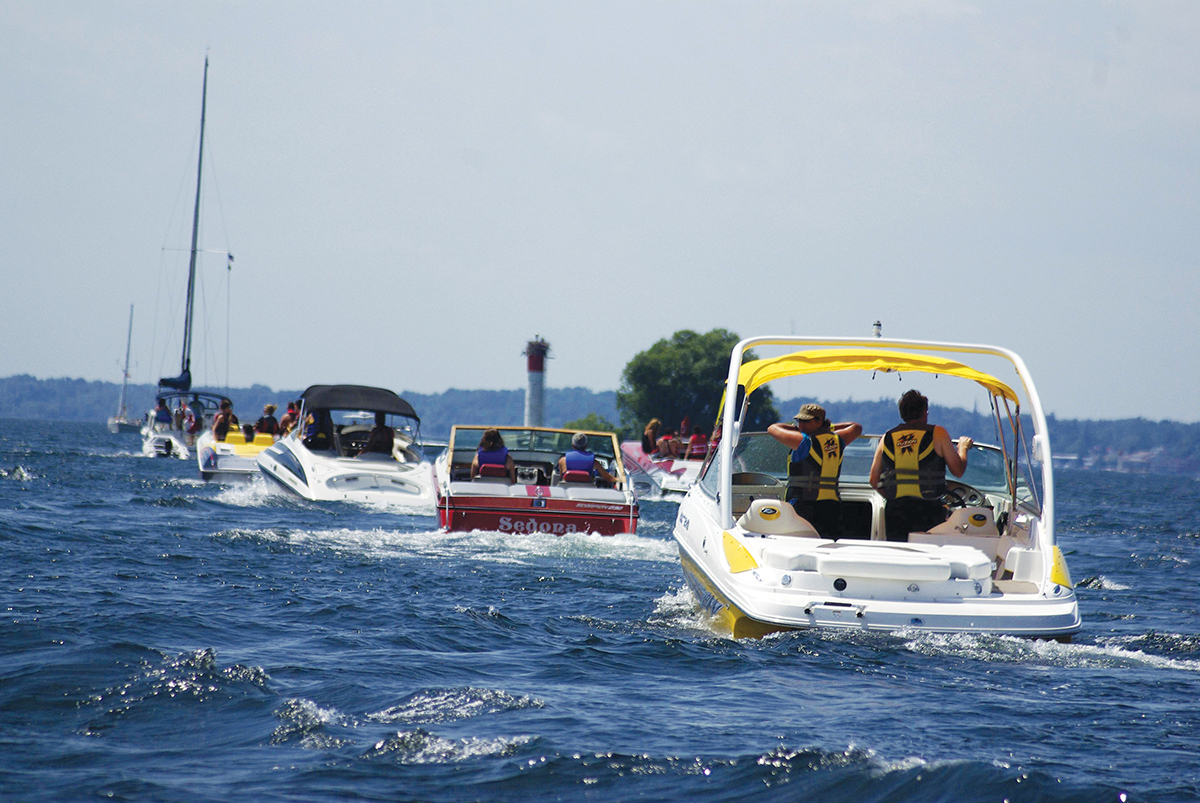Let’s Not Meet By Accident
By Mark King
Without Rules of the Road in the water there would be chaos. Rules of the Road have been established to ensure there is minimum risk of collision among all vessels on the water.
They have been developed and written for special circumstances that exist with different types of vessels on the rivers, lakes, and oceans.
Unlike roadways, it is difficult to govern every action on the water. There are no lines to mark where we may and may not travel. There are no street lights to help us navigate intersections to ensure we are all doing the same thing in the same direction at the same time.
On a busy summer weekend on most Canadian and international waterways the prudent skipper realizes he has to pay particular attention to the rules of the road.
On a hot summer day not too long ago we witnessed a group of boaters in a small open boat playing chicken in a busy waterway with cruisers and other boats that were not as agile.
On other occasions we have witnessed boats passing others in narrow and tricky channels when they could not possibly have been able to see what was ahead.
Disaster didn’t happen in either of those cases or some others I haven’t mentioned only because more experienced skippers took actions appropriate to the circumstances.
A combination of understanding of the Rules of the Road and superior handling skills saved the day.
Knowledgeable and skilled boaters will continue to save lives on the water but knowing what to do and when to do it.
The ultimate goal of any rule or right-of-way on the water is to avoid a collision. And the bottom line for every skipper is that you must do whatever you have to do to avoid any risk of collision.
Beyond the Rules of the Road there are techniques that can be applied to ensure your boat doesn’t run into another vessel.
One of the earliest methods to use and remember is Collision Bearing.
Essentially, if a vessel is drawing closer to you and its relative bearing to your vessel is not changing, you will collide.
How does this work?
Let’s say you are travelling along the waterways and spot a vessel off your starboard bow. From your helm seat you notice that it lines up with the second bow rail stanchion.
Minutes pass and you note that your vessel and the other vessel are getting closer together.
If another quick check shows the other vessel is still in the same line of position, lined up with your second bow rail stanchion, you are on a collision course!
If one of you does not change course or speed substantially you will eventually collide.
If is important not to be fooled in these circumstances by changes in the apparent position caused by pitching and yawing of the vessel as it moves through the water.
Coming down the back of a wave will move your bow stanchion enough that you may think you are not on a collision bearing with the other vessel.
Keep watching.
On the water, unless the day is dead calm, it can be relatively difficult to make sure you are not on a collision course.
The rules state that the give-way vessel, the one that does not have the right-of-way, must take early and substantial action to avoid a collision.
The keys here are “early” and “substantial.”
You must take early action so that the other skipper is sure that you know your responsibility. If you hesitate, he may move instead and accidentally make the situation worse.
Your action must be substantial so the other skipper can clearly see that you are making the effort to avoid a collision and he can continue in his course and speed.
Without early and substantial action, the other skipper, who recognizes that it is important to do everything possible to avoid a collision, may make a manoeuvre at the same time as you. That only worsens the situation.
Having written all this it is important to remember that not everyone on the water knows or understands the Rules of the Road.
And then there are the folks who know the rules but refuse to obey them, because they think it is funny to play chicken with a boat that could sink them instantly or because they are in such a hurry that they just have to pass you in the narrow winding channel.
It is imperative that we always maintain a look-out by sight and sound while we are boating.
And it is imperative that we do everything we can to avoid a potential collision.
Sometimes it will mean not demanding your right-of-way.
It adds a small degree of stress to our time on the water but in the end it could save the day and the season.
Keyword : Boating, boating tips, boating vessel, lakes, lifeline, powerboating, safety, water, Yachts Boating, boating tips, boating vessel, lakes, lifeline, powerboating, safety, water, Yachts
